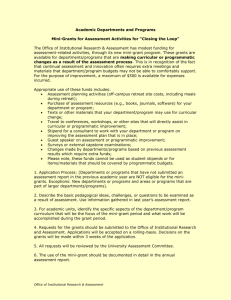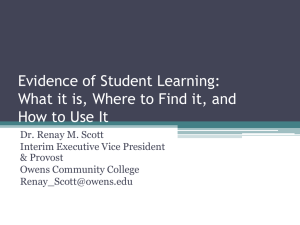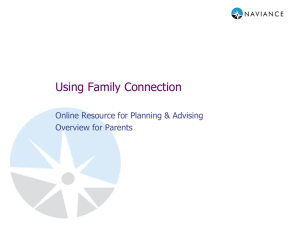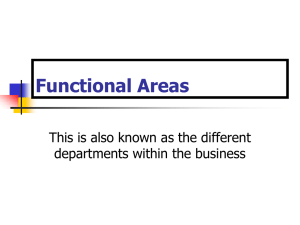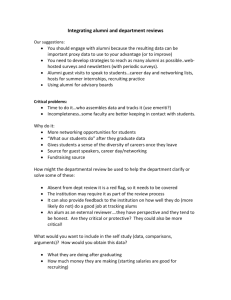to read about survey design and assessment
advertisement
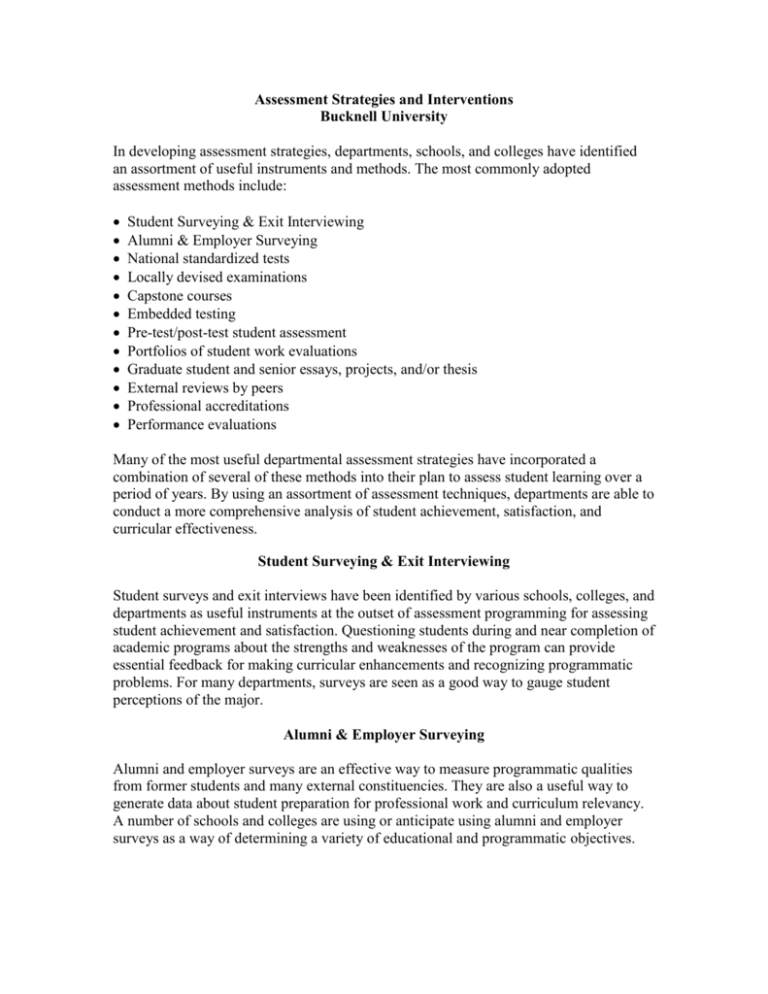
Assessment Strategies and Interventions Bucknell University In developing assessment strategies, departments, schools, and colleges have identified an assortment of useful instruments and methods. The most commonly adopted assessment methods include: Student Surveying & Exit Interviewing Alumni & Employer Surveying National standardized tests Locally devised examinations Capstone courses Embedded testing Pre-test/post-test student assessment Portfolios of student work evaluations Graduate student and senior essays, projects, and/or thesis External reviews by peers Professional accreditations Performance evaluations Many of the most useful departmental assessment strategies have incorporated a combination of several of these methods into their plan to assess student learning over a period of years. By using an assortment of assessment techniques, departments are able to conduct a more comprehensive analysis of student achievement, satisfaction, and curricular effectiveness. Student Surveying & Exit Interviewing Student surveys and exit interviews have been identified by various schools, colleges, and departments as useful instruments at the outset of assessment programming for assessing student achievement and satisfaction. Questioning students during and near completion of academic programs about the strengths and weaknesses of the program can provide essential feedback for making curricular enhancements and recognizing programmatic problems. For many departments, surveys are seen as a good way to gauge student perceptions of the major. Alumni & Employer Surveying Alumni and employer surveys are an effective way to measure programmatic qualities from former students and many external constituencies. They are also a useful way to generate data about student preparation for professional work and curriculum relevancy. A number of schools and colleges are using or anticipate using alumni and employer surveys as a way of determining a variety of educational and programmatic objectives. National Standardized Tests Nationally standardized multiple-choice tests have been identified as a good means of evaluating student outcomes in many programs and disciplines. National examinations and standards enable faculty to use assessment results as comparative tools to monitor the progress of their students in many academic areas. Locally Devised Examinations Locally developed examinations are a good means of evaluating student outcomes in many areas. A well-constructed and carefully administered test that is graded by two or more judges for the specific purpose of determining student achievement is a widely accepted and popular instrument for assessing most majors Capstone Courses Capstone courses are potentially significant assessment tools because they integrate knowledge, concepts, and skills associated with an entire sequence of study in a program. While some departments already have capstone courses in place making it easier to incorporate assessment practices, others are introducing these courses for the first time. It is anticipated by the department implementing capstone courses that assessment information obtained from students in the course will provide valuable data for addressing program improvements. Embedded Testing Embedded testing is a method of assessment that has proven to be effective and efficient because of the limited amount of time required to implement the process. In this method, questions intended to assess student outcomes are incorporated or embedded into final exams, research reports, and term papers in higher-level courses. The questions are then evaluated by two or more faculty to determine whether or not the students are achieving the prescribed educational objectives. Portfolio of Student Work Using portfolios as an assessment method takes advantage of work students already are scheduled to do in class. In most cases, portfolios are characterized by collections of student work that exhibit to the faculty and the student the student's progress and achievement in given areas. Included in portfolio assessments may be research papers, reports, essay and multiple choice examinations, self-evaluations, personal essays, journals, etc. The information is most often gathered in class but also can be collected as out-of-class assignments. 2 Graduate Student and Senior Essays, Projects, and/or Thesis A graduate student or senior thesis, research project, or performance paper that is structured by the department to give students an opportunity to demonstrate a mastery of an array of skills and knowledge appropriate to the major or have proven to be useful assessment instruments. By evaluating a number of such projects, departments are able to discern general patterns of student performance that might lend insight into the strengths and weaknesses of the program as a whole. External Reviews by Peers & Outside Evaluators Peer review of academic programs is a widely accepted method of assessing curricular sequences, course development and delivery, and the effectiveness of faculty. Using external reviewers is a useful way of analyzing whether student achievement correlates appropriately with departmental objectives and goals. In numerous instances, recommendations by skilled external reviewers have been instrumental in identifying program strengths and weaknesses. Professional Accreditations Many professional accreditation associations require that their academic members use a variety of assessment instruments to measure student and programmatic achievement. Professional schools and colleges face increasing pressures from accreditation agencies and other peer agencies to change academic programs to better coordinate national and regional curricular requirements. Information derived from these assessments allows these associations, departments, and faculty to compare and contrast academic strengths and weaknesses of various programs, schools, and colleges. Even though much of the assessment data is gathered to meet externally prescribed specifications, it is possible for academic units facing these externally driven pressures to use existing assessment techniques and results for internal programmatic improvements. At many schools, a number of departments, schools, and colleges undergo periodic accreditation reviews and use these as an ongoing source of assessment data. The Schools of are required to use national outcomes assessment methods to assess student learning and program success. In these instances, Nursing, Pharmacy, and Engineering have many externally defined educational goals and objectives that need to be regularly addressed in addition to the objectives established by their own departments and faculty. Performance Evaluations Performance evaluations have been used by faculty as a kind of pre-test/post-test assessment of student skills and knowledge. Disciplines that have traditionally demonstrated difficulty in developing adequate information about student learning such Theatre, music, and art have had significant success in using performance evaluations as assessment tools. 3 Institutional Surveys CLA - Collegiate learning Assessment CIRP – Cooperative Institutional Research Program First-Year Survey YFCY – Your First College Year NSSE – National Survey of Student Engagement FSSE – Faculty Survey of Student Engagement HERI Faculty Survey The University of Wisconsin Survey Center completed the fourth student survey during the spring semester of the 1995-96 academic year. The results of the survey were released in the fall of 1996-97. The survey was composed of two parts assessing student satisfaction with their overall UW-Madison experience and other detailed program experiences such as computer access and financial aid. The survey provides the university with invaluable student assessment information addressing topics related to instruction, course availability, career issues, advising, services and facilities, computer awareness. Over the last four years, results generated from the surveys have been instrumental in identifying many programmatic and institutional areas that need improvement, while highlighting other areas that are very effective in meeting service and curricular objectives. 4
